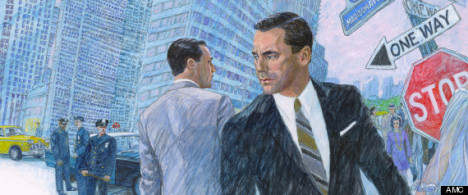After Mad Men, big money replaced big ideas
 [Warning contains spoilers] As the final season of Mad Men kicks off Craig Wood of Indiana University looks at what has changed in the decades since Don Draper bestrode Maddison Avenue in this cross-posting from The Conversation.
[Warning contains spoilers] As the final season of Mad Men kicks off Craig Wood of Indiana University looks at what has changed in the decades since Don Draper bestrode Maddison Avenue in this cross-posting from The Conversation.
In last May’s mid-season finale of “Mad Men,” advertising agency patriarch Bert Cooper dies unexpectedly after watching the live television broadcast of the Apollo 11 moon landing.
The next day, Don Draper has a hallucinatory vision of Bert performing a winsome song and dance routine of what must be the greatest of all deceptive advertising promises: “The Best Things in Life Are Free.”
Cooper’s 1969 death could signify much more: as the second half of season seven begins and the series approaches its conclusion, viewers may witness the stirrings of what – in real life – marked the end of advertising’s modern era.


Oh for god’s sake people – stop thinking this show is anything like the reality. I know with a real “madman” who worked at Wells Rich Green and others in Madison avenue.
He’ll tell you about hiring penthouses and prostitutes for 2 day “pitching events”. Wolf of Wall street was more like it.
The only question I’ve got about this article: Charles and Maurice (Saatchi) are from Iraq? Really?
Yes Susi they are. Their family fled Iraq for the London textile markets in 1947.